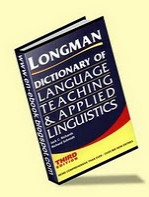In Listening Part A you will hear a short conversation involving two people; this conversation is followed by a question. It is important to understand that the answer to this type of question is more often (but not always) found in the second line of the conversation.
Example:
On the recording, you hear:
(Man) : Billy really made a big mistake this time.
(Woman) : Yes, he forgot to turn in his research paper.
(Man) : What does the woman say about Billy?
In your test book, you read:
(A) It was the first time he made a mistake
(B) He forgot to write his paper.
(C) He turned in the paper in the wrong place.
(D) He didn't remember to submit his assignment.
Analysis:
The second line of the conversation indicates that Billy forgot to turn in his paper, and this mean that he did not remember to submit his assignment. Therefore, the best answer is (B)
The following information outlines the most important strategy for Listening Part A
STRATEGIES 1: FOCUS ON THE SECOND LINE
- The second line of the conversation probably contains the answer to the questions
- Listen to the first line of the conversation. If you understand, that's good. If you don't understand it, don't worry because it probably does not contain the answer.
- Be focus on the second line of the conversation because it probably contains the answer. Repeat the second line in your mind as you read through the answer in the text.





